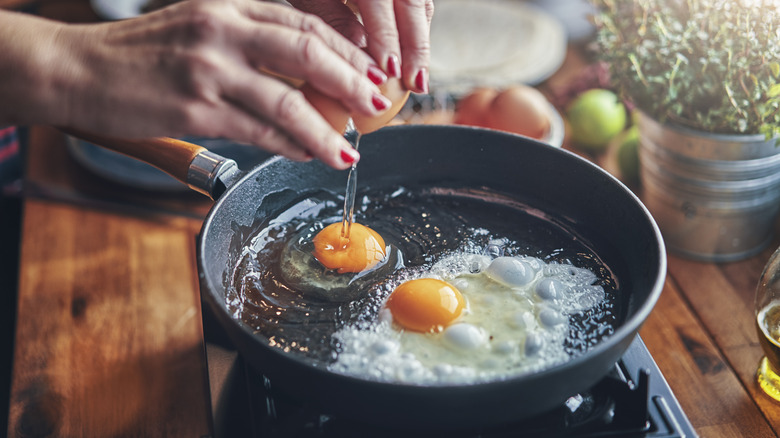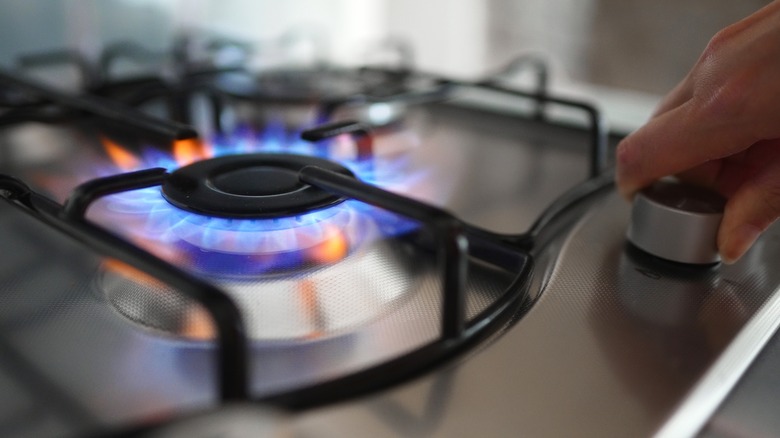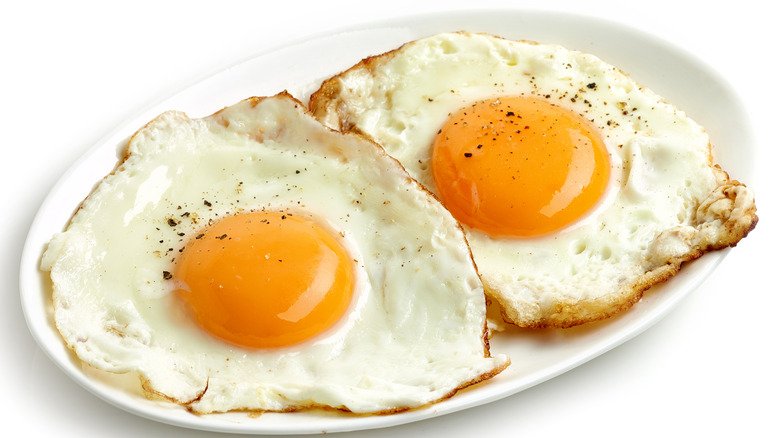Why You Should Never Crack Eggs Into A Cold Pan
Frying an egg seems foolproof. Just crack an egg in a pan and let it cook. But experienced breakfast makers know the one sound — or lack thereof — that indicates they've made a big mistake. When an egg plops rather than hisses onto the skillet, you know you're in trouble. The lukewarm reception from the pan's oil or butter indicates that the pan itself is lukewarm, too. Because the pan is too cold, your meal is likely going to be stuck to the tepid surface and greasy from sitting in a glug of oil.
That's because when pans heat up, all the tiny dips and cracks along the metal surface expand, inviting liquids in like egg whites. Once the protein flows into those invisible nooks and crannies, it cooks and sticks fast, leaving behind a mess. Heating the skillet with fat ensures a layer of protection from those grooves, making your perfectly fried edges easy to lift off and serve.
Setting up your skillet
Before you turn the dial, think carefully about your choice of pan. Cast iron, while prized for its ability to retain heat and warm evenly, is notoriously finicky. If you're not confident in your seasoning, opt for an easier material like nonstick or stainless steel. If nothing else, they'll be easier to clean off if your first attempt goes south.
Knowing the stakes, you might be tempted to crank up the temperature. However, we'll remind you that when it comes to pre-heating, more is not more. In other words, don't go overboard and crack eggs into a smoking hot pan — that's a sure recipe for overcooked, rubbery yolks. Start at medium heat, and let your fat of choice warm for about 5 minutes. Check that the skillet has come to temperature by sprinkling a few droplets of water across the surface. If the drops sizzle, your egg will do the same. If the metal is too hot, remove it from the burner, and allow the oil to cool slightly.
Tips for egg-celent fried eggs
Starting with a hot skillet is important because it helps create a nonstick surface, but cooks also appreciate the impact it has on the browning process. If you, like chef Jamie Oliver, prefer soft, creamy whites, you may want to rely on a lower heat when frying, or follow a smart fried egg hack and add water to the whites. If you're all about frilled, deeply toasted edges, take a page from chef Andrew Zimmern, who uses lots of butter and maintains a high sizzle. Those partial to fruitier fats are not alone. Chef José Andrés argues on X, formerly known as Twitter, that "a fried egg must be fried in olive oil!" The Spanish chef takes a unique approach to breakfast and heats a whopping 4 tablespoons of the stuff to achieve his ideal texture.
No matter how you choose to fry, to achieve seriously precise orbs, crack each one into a small bowl before gently tipping it into the pan. This gives you maximum control and guarantees a shell-free fry. If over easy is more your thing, use a fish spatula to flip the protein gently before serving.



